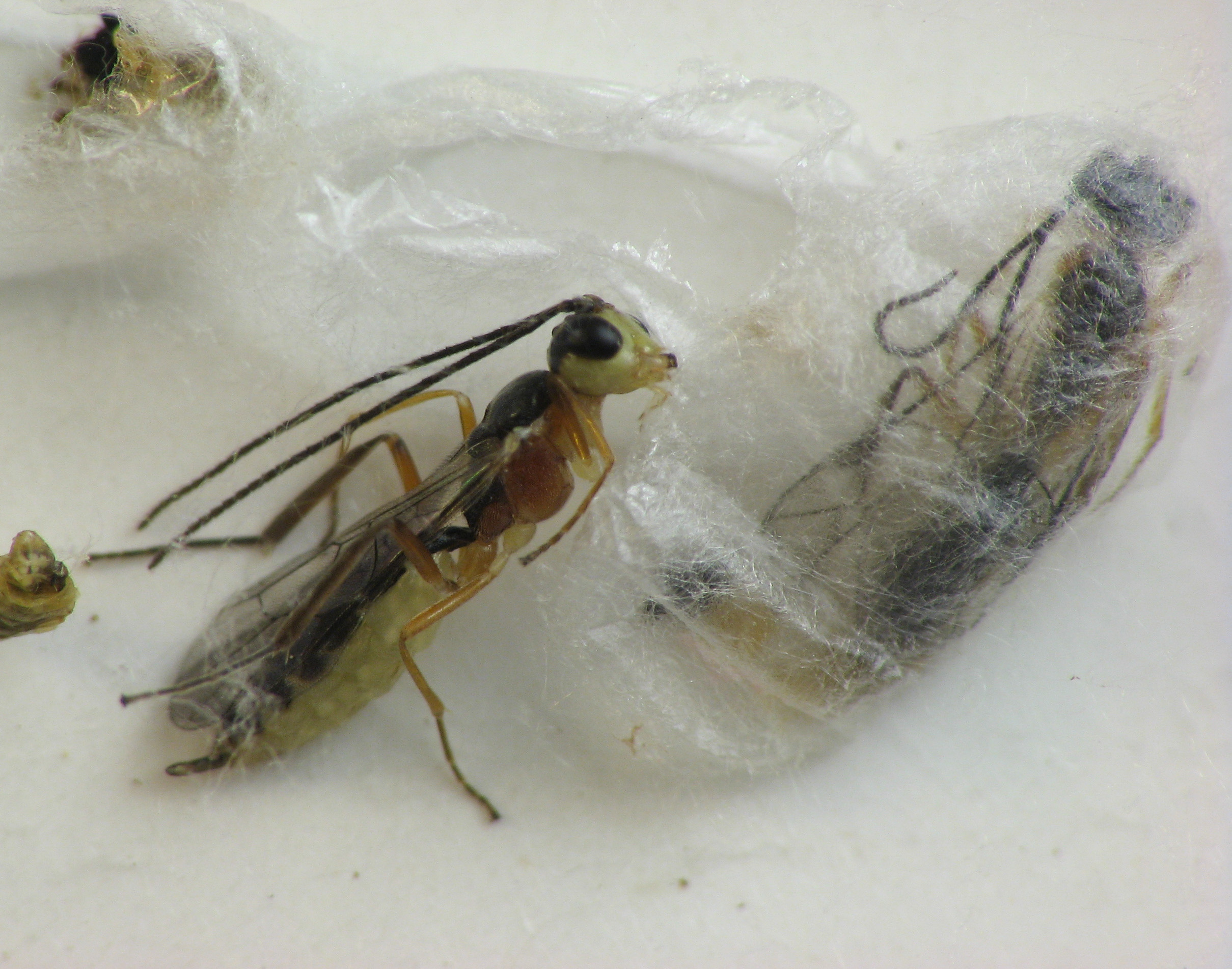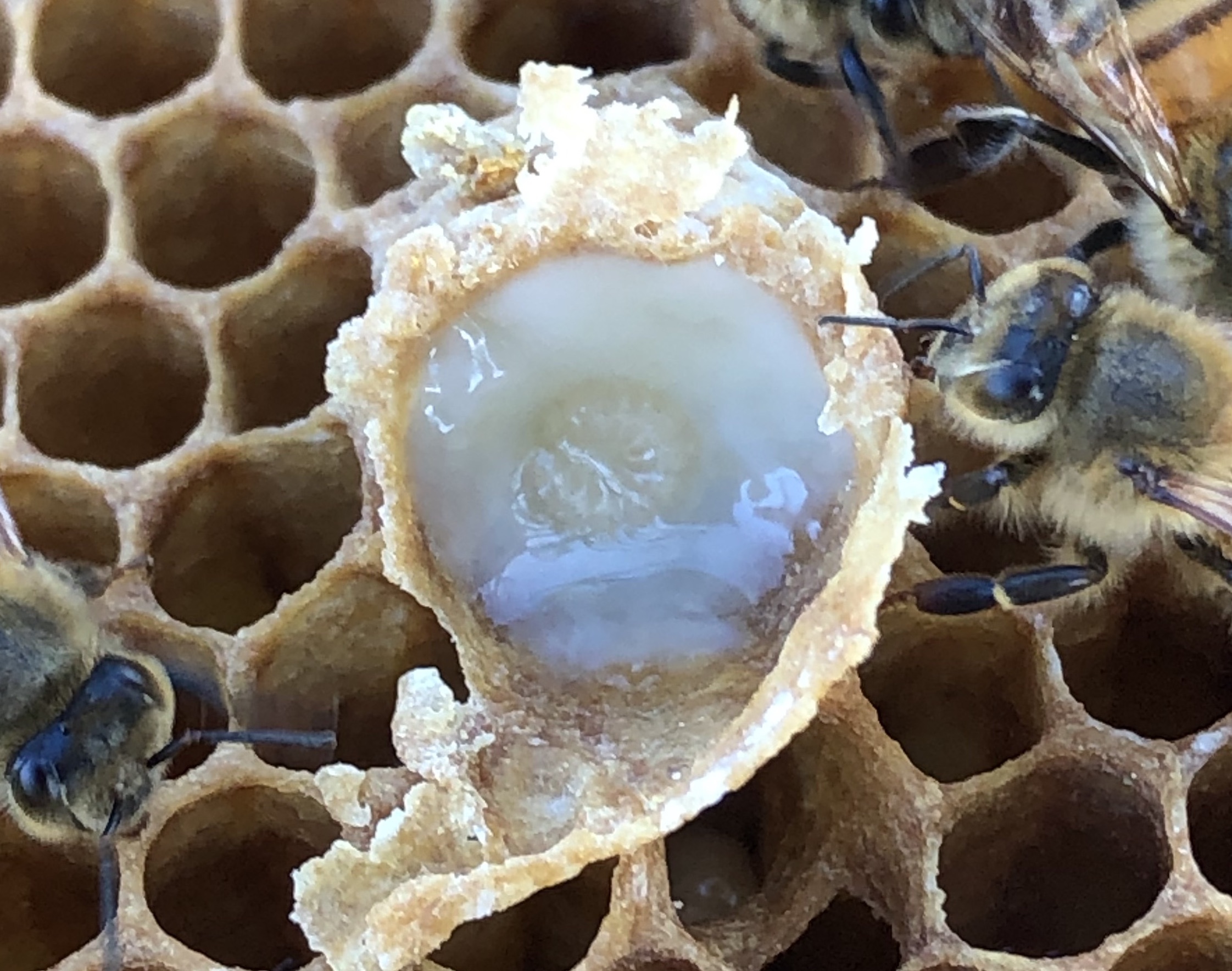|
Bee Brood
In beekeeping, bee brood or brood refers to the eggs, larvae and pupae of honeybees. The brood of Western honey bees develops within a bee hive. In man-made, removable frame hives, such as Langstroth hives, each frame which is mainly occupied by brood is called a brood frame. Brood frames usually have some pollen and nectar or honey in the upper corners of the frame. The rest of the brood frame cells may be empty or occupied by brood in various developmental stages. During the brood raising season, the bees may reuse the cells from which brood has emerged for additional brood or convert it to honey or pollen storage. Bees show remarkable flexibility in adapting cells to a use best suited for the hive's survival. Brood chamber development In modern removable frame hives the nursery area is in the ''brood chamber'', which beekeepers prefer to be in the bottom box. In the late winter and early spring as the brood cycle begins, the queen starts to lay eggs within the winter cluster i ... [...More Info...] [...Related Items...] OR: [Wikipedia] [Google] [Baidu] |
Worker Bee
A worker bee is any female (eusocial) bee that lacks the full reproductive capacity of the colony's queen bee; under most circumstances, this is correlated to an increase in certain non-reproductive activities relative to a queen. While worker bees occur in all eusocial bee species, the term is rarely used (outside of scientific literature) for any bees other than honey bees. Honey bee workers gather pollen into the pollen baskets on their back legs and carry it back to the hive where it is used as food for the developing brood. Pollen carried on their bodies may be carried to another flower where a small portion can rub off onto the pistil, resulting in cross pollination. A significant amount of the world's food supply, particularly fruit, depends greatly on crop pollination by honey bees. Nectar is sucked up through the proboscis, mixed with enzymes in the stomach, and carried back to the hive, where it is stored in wax cells and evaporated into honey. Life cycle Although t ... [...More Info...] [...Related Items...] OR: [Wikipedia] [Google] [Baidu] |
Protein
Proteins are large biomolecules and macromolecules that comprise one or more long chains of amino acid residues. Proteins perform a vast array of functions within organisms, including catalysing metabolic reactions, DNA replication, responding to stimuli, providing structure to cells and organisms, and transporting molecules from one location to another. Proteins differ from one another primarily in their sequence of amino acids, which is dictated by the nucleotide sequence of their genes, and which usually results in protein folding into a specific 3D structure that determines its activity. A linear chain of amino acid residues is called a polypeptide. A protein contains at least one long polypeptide. Short polypeptides, containing less than 20–30 residues, are rarely considered to be proteins and are commonly called peptides. The individual amino acid residues are bonded together by peptide bonds and adjacent amino acid residues. The sequence of amino acid resid ... [...More Info...] [...Related Items...] OR: [Wikipedia] [Google] [Baidu] |
Pollination Management
Pollination management is the horticultural practices that accomplish or enhance pollination of a crop, to improve yield or quality, by understanding of the particular crop's pollination needs, and by knowledgeable management of pollenizers, pollinators, and pollination conditions. While people think first of the European honey bee The western honey bee or European honey bee (''Apis mellifera'') is the most common of the 7–12 species of honey bees worldwide. The genus name ''Apis'' is Latin for "bee", and ''mellifera'' is the Latin for "honey-bearing" or "honey carrying", ... when pollination comes up, in fact there are many different means of pollination management that are used, both other insects and other mechanisms. There are other insects commercially available that are more efficient, like the blue orchard bee for fruit and nut trees, local bumblebees better specialized for some other crops, hand pollination that is essential for production of hybrid seeds and some ... [...More Info...] [...Related Items...] OR: [Wikipedia] [Google] [Baidu] |
Worker Bee
A worker bee is any female (eusocial) bee that lacks the full reproductive capacity of the colony's queen bee; under most circumstances, this is correlated to an increase in certain non-reproductive activities relative to a queen. While worker bees occur in all eusocial bee species, the term is rarely used (outside of scientific literature) for any bees other than honey bees. Honey bee workers gather pollen into the pollen baskets on their back legs and carry it back to the hive where it is used as food for the developing brood. Pollen carried on their bodies may be carried to another flower where a small portion can rub off onto the pistil, resulting in cross pollination. A significant amount of the world's food supply, particularly fruit, depends greatly on crop pollination by honey bees. Nectar is sucked up through the proboscis, mixed with enzymes in the stomach, and carried back to the hive, where it is stored in wax cells and evaporated into honey. Life cycle Although t ... [...More Info...] [...Related Items...] OR: [Wikipedia] [Google] [Baidu] |
Queen Bee
A queen bee is typically an adult, mated female ( gyne) that lives in a colony or hive of honey bees. With fully developed reproductive organs, the queen is usually the mother of most, if not all, of the bees in the beehive. Queens are developed from larvae selected by worker bees and specially fed in order to become sexually mature. There is normally only one adult, mated queen in a hive, in which case the bees will usually follow and fiercely protect her. The term "queen bee" can be more generally applied to any dominant reproductive female in a colony of a eusocial bee species other than honey bees. However, as in the Brazilian stingless bee '' Schwarziana quadripunctata'', a single nest may have multiple queens or even dwarf queens, ready to replace a dominant queen in a case of sudden death. Development During the warm parts of the year, female "worker" bees leave the hive every day to collect nectar and pollen. While male bees serve no architectural or pollinating ... [...More Info...] [...Related Items...] OR: [Wikipedia] [Google] [Baidu] |
Cocoon (silk)
A pupa ( la, pupa, "doll"; plural: ''pupae'') is the life stage of some insects undergoing transformation between immature and mature stages. Insects that go through a pupal stage are holometabolous: they go through four distinct stages in their life cycle, the stages thereof being egg, larva, pupa, and imago. The processes of entering and completing the pupal stage are controlled by the insect's hormones, especially juvenile hormone, prothoracicotropic hormone, and ecdysone. The act of becoming a pupa is called pupation, and the act of emerging from the pupal case is called eclosion or emergence. The pupae of different groups of insects have different names such as ''chrysalis'' for the pupae of butterflies and ''tumbler'' for those of the mosquito family. Pupae may further be enclosed in other structures such as cocoons, nests, or shells. Position in life cycle The pupal stage follows the larval stage and precedes adulthood ('' imago'') in insects with complete me ... [...More Info...] [...Related Items...] OR: [Wikipedia] [Google] [Baidu] |
Drone (bee)
A drone is a male honey bee. Unlike the female worker bee, drones do not have stingers. They gather neither nectar nor pollen and are unable to feed without assistance from worker bees. A drone's only role is to mate with a maiden queen in nuptial flight. Genetics Drones carry only one type of allele at each chromosomal position, because they are haploid (containing only one set of chromosomes from the mother). During the development of eggs within a queen, a diploid cell with 32 chromosomes divides to generate haploid cells called gametes with 16 chromosomes. The result is a haploid egg, with chromosomes having a new combination of alleles at the various loci. This process is called arrhenotokous parthenogenesis or simply arrhenotoky. Because the male bee technically has only a mother, and no father, its genealogical tree is unusual. The first generation has one member (the male). One generation back also has one member (the mother). Two generations back are two memb ... [...More Info...] [...Related Items...] OR: [Wikipedia] [Google] [Baidu] |
Royal Jelly
Royal jelly is a honey bee secretion that is used in the nutrition of larvae and adult queens. It is secreted from the glands in the hypopharynx of nurse bees, and fed to all larvae in the colony, regardless of sex or caste.Graham, J. (ed.) (1992) ''The Hive and the Honey Bee'' (Revised Edition). Dadant & Sons. During the process of creating new queens, the workers construct special queen cells. The larvae in these cells are fed with copious amounts of royal jelly. This type of feeding triggers the development of queen morphology, including the fully developed ovaries needed to lay eggs. Royal jelly is sometimes used in alternative medicine under the category apitherapy. It is often sold as a dietary supplement for humans, but the European Food Safety Authority has concluded that current evidence does not support the claim that consuming royal jelly offers health benefits to humans. In the United States, the Food and Drug Administration has taken legal action against compani ... [...More Info...] [...Related Items...] OR: [Wikipedia] [Google] [Baidu] |
Honeycomb
A honeycomb is a mass of hexagonal prismatic wax cells built by honey bees in their nests to contain their larvae and stores of honey and pollen. Beekeepers may remove the entire honeycomb to harvest honey. Honey bees consume about of honey to secrete of wax, and so beekeepers may return the wax to the hive after harvesting the honey to improve honey outputs. The structure of the comb may be left basically intact when honey is extracted from it by uncapping and spinning in a centrifugal machine, more specifically a honey extractor. If the honeycomb is too worn out, the wax can be reused in a number of ways, including making sheets of comb foundation with hexagonal pattern. Such foundation sheets allow the bees to build the comb with less effort, and the hexagonal pattern of worker-sized cell bases discourages the bees from building the larger drone cells. Fresh, new comb is sometimes sold and used intact as comb honey, especially if the honey is being spread on bread rather th ... [...More Info...] [...Related Items...] OR: [Wikipedia] [Google] [Baidu] |
Brood Comb
Brood may refer to: Nature * Brood, a collective term for offspring * Brooding, the incubation of bird eggs by their parents * Bee brood, the young of a beehive * Individual broods of North American Periodical Cicadas: ** Brood X, the largest brood, which emerges on a 17-year cycle ** Brood XIII, a brood centered on Northern Illinois and its surrounding area, which also emerges on a 17-year cycle ** Brood XIX, a large brood in the Southern United States which emerges on a 13-year cycle Research search has led to this discovery but should give source so as not to commit plagiarism. People with the surname * Herman Brood (1946–2001), Dutch musician, painter, actor, poet and media personality * Philippe Brood (1964–2000), Dutch politician Entertainment * '' The Brood'', a 1979 horror film directed by David Cronenberg * Brood (comics), an alien species from the Marvel Comics universe * The Brood (professional wrestling), and The New Brood, WWF professional wrestling stable ... [...More Info...] [...Related Items...] OR: [Wikipedia] [Google] [Baidu] |
.jpg)



.jpg)
